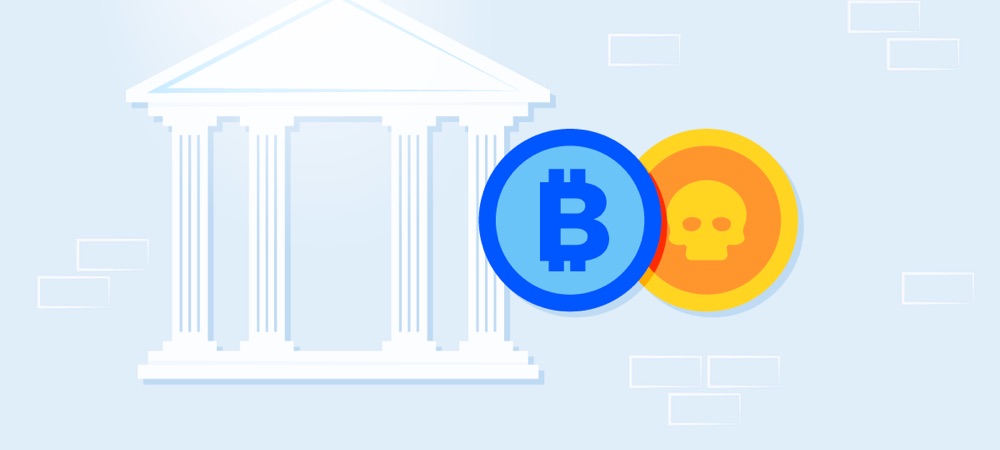
Nested Exchanges – The Danger is Closer Than You Think
Most of us are familiar with the middleman. It’s a more common concept than we realize. eBay is a middleman between you and the product you want to buy. Realtors are the middleman to your dream house. Even everyday services like Uber are technically considered a middleman.
In the finance industry, middlemen are often seen in banking. When you need to transfer or receive money internationally, your bank would usually go through another platform connected to a bank in another country to get you the money you need. PayPal is a giant middleman in money transfer and a benchmark for today’s standards.
What makes having a middleman great is not just the efficiency but the mutual consent in the transaction. Nested exchanges are a middleman in cryptocurrency, except without their customers knowing.
A nested exchange has accounts across some of the most popular crypto platforms and lets its customers trade with those accounts through its service. It is essentially a bridge between users and all of its accounts making them think they’re actually the ones doing all the trading.
People who knowingly use nested exchanges often have other things in mind than simply trading. Money laundering is among many malicious activities conducted through the utility of nested exchanges. It’s difficult to trace these activities and once you’ve engaged in one of these platforms, you may be categorically placed among bad actors.
Nested Exchanges – How Do They Work?
Mechanically, a nested exchange operates on simple terms. It would open an account on an official platform, usually a well-known one like Binance, then reflect its users’ actions and keep the commissions. The platform being used here is called the host.
For example, if you have an account with a nested exchange and want to trade some Ethereum for Solana. You send in the request and the nested exchange would take some of that Ethereum and obtain Solana on a host platform.
The whole time you wouldn’t know this is what happens in the background. If you look closer, however, you’ll see the exchange is doing its best to hide the sources of these coins. This is one of the glaring red flags users should be on the lookout for at all times.
Nested Exchanges and Their Nefarious Purpose
The very nature of nested exchanges is to bypass identity checks. This is different from the anonymity of decentralized exchanges. DEX’s do not require personal information but secure every transaction with smart contracts. So while you never know who you’re dealing with, nobody can get past the blockchain and the records it keeps.
Nested exchanges don’t care too much about who their users are or their intentions. Most of the verification process seems arbitrary and is often done in an offhand manner; some don’t even bother to do it at all.
Despite its security, the KYC continues to be a burden for a lot of crypto traders. Many of us are still reluctant to disclose ourselves at that level of detail. Perhaps the internet has accustomed us to the sense of anonymity in such a way that any data submission would feel like exposure.
Whatever the reason is, the lack of scrutiny remains an appeal especially in the world of crypto. That’s what makes DEX so popular in the first place. Many traders will choose a nested exchange without further research if they see a low level of verification. What they don’t know is they’re actually risking the entirety of their investment on that platform.
Due to low security, nested exchanges are a haven for money launderers and ransomware. Stolen crypto is also known to find its way here to acquire a clean output. The fact that some nested exchanges offer in-person cash transactions for cryptocurrencies makes it even easier to launder money and stolen coins. We can only imagine what goes on in one of these transactions or the consequences of them going awry.
When using a nested exchange, you risk losing your money in many ways on top of being among bad actors of crypto. Since the actual account belongs to the exchange, your “account” technically doesn’t exist at all. It can close you down for any reason and there wouldn’t be anything you could do about it.
Another thing is nested exchanges are often under surveillance. Large platforms tend to flag accounts with suspicious activities or unusually large trades. This level of heat usually results in a complete operational shutdown. When that happens, all your invested coins will be lost. A good example of this is the recent encounter between a nested exchange Suex and the cryptocurrency platform Binance.
Conclusion – Avoid Nested Exchanges at All Costs
As if it’s not obvious by now, nested exchanges are bad news and you shouldn’t touch it with a ten-foot pole.
While they tend to disguise themselves as a trusted crypto service, it’s not too difficult to identify a nested exchange. One of the first things to check for is the KYC process. A legitimate verification procedure requires in-depth details and often takes days to complete. When an exchange offers immediate access to all of their features without at least an address validation, it prompts for an investigation.
You can also use a blockchain explorer to see where the crypto is coming from when you withdraw. If there’s an external wallet address you don’t recognize, it’s probably time to pack up and leave.
One thing you can do to prevent a dramatic episode with a nested exchange is to stick with official, well-known platforms. The transparency and security of your trading experience are well worth a couple of days waiting for KYC. Cryptocurrency is all about betting on the future, so why would you let someone else gamble with yours?
